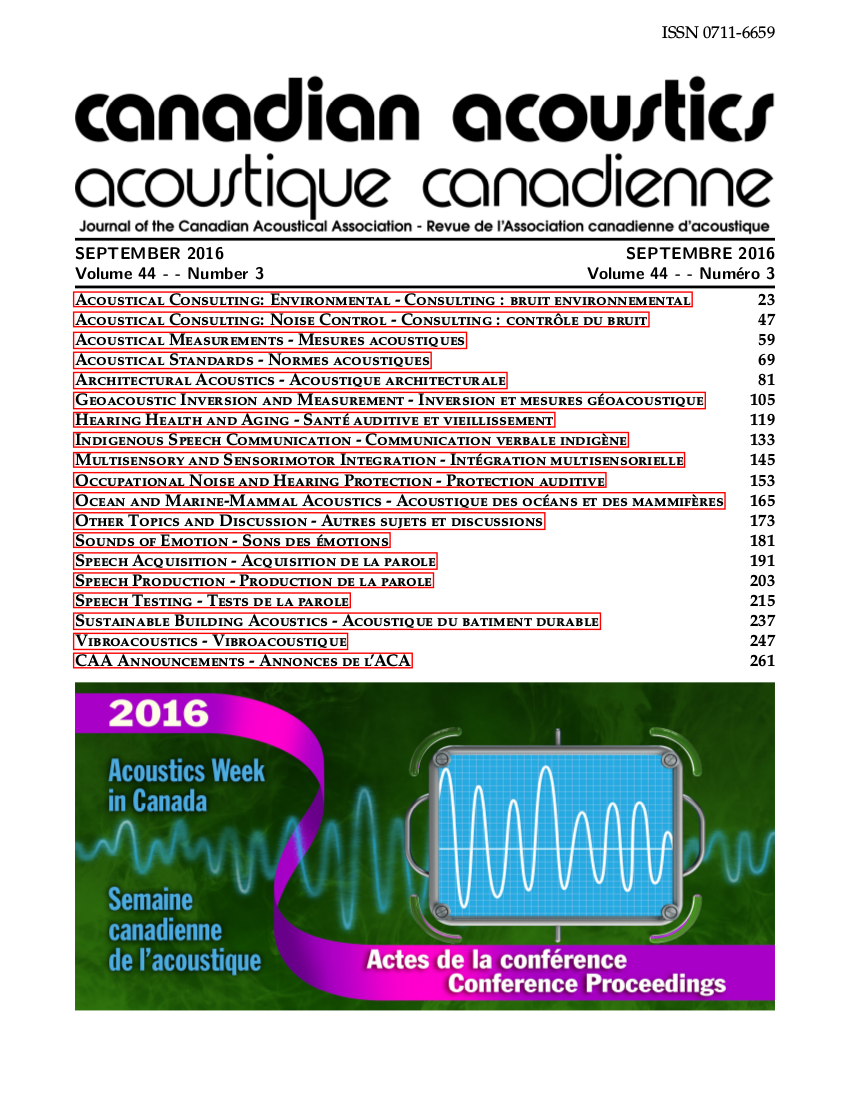Audiologic care for clients with multiple medical comorbidities: Modifications to clinical practice and inclusion of family members and caregivers
Abstract
Older adult clients seeking audiologic rehabilitation commonly present with concomitant health issues, such as visual impairment, decline in manual dexterity, and changes in cognitive status. Audiologists may modify assessment and treatment plans to accommodate these health issues, and may include family members and caregivers in their rehab planning as part of a family-centered approach to client care. Charts from 159 clients of a geriatric audiology clinic who presented for a hearing aid evaluation in 2015 were examined to determine a) how frequently audiologists indicated that their clients experienced medical comorbidities related to vision, manual dexterity, and cognition; b) specific modifications to clinical practice made by the audiologists to accommodate for these comorbidities; and c) level of involvement of family members/caregivers in the client’s audiologic rehabilitation, as noted in the chart by the audiologist. The institutional medical health records were also examined to extract any additional information about the clients' health status. The audiologists noted prevalence rates for visual, manual dexterity, and cognitive issues of approximately 50%, 35%, and 45%, respectively. Modifications to clinical practice, such as using rechargeable hearing aids for clients with poor manual dexterity, were made to accommodate these comorbidities. Although the clients were frequently accompanied by a family member or caregiver, in fewer than 20% of the cases did the audiologist explicitly note this information in the chart. Accumulating evidence suggests that the negative consequences of hearing loss, such as social isolation and reduced overall well-being, are not limited to the impaired individual. Rather, hearing loss, especially in older adults, can also have devastating effects on family members and caregivers. We will discuss potential changes to audiologic best practice that could serve to a) accommodate medical comorbidities in older clients, and b) encourage inclusion of significant others to optimize treatment success.
Additional Files
Published
How to Cite
Issue
Section
License
Author Licensing Addendum
This Licensing Addendum ("Addendum") is entered into between the undersigned Author(s) and Canadian Acoustics journal published by the Canadian Acoustical Association (hereinafter referred to as the "Publisher"). The Author(s) and the Publisher agree as follows:
-
Retained Rights: The Author(s) retain(s) the following rights:
- The right to reproduce, distribute, and publicly display the Work on the Author's personal website or the website of the Author's institution.
- The right to use the Work in the Author's teaching activities and presentations.
- The right to include the Work in a compilation for the Author's personal use, not for sale.
-
Grant of License: The Author(s) grant(s) to the Publisher a worldwide exclusive license to publish, reproduce, distribute, and display the Work in Canadian Acoustics and any other formats and media deemed appropriate by the Publisher.
-
Attribution: The Publisher agrees to include proper attribution to the Author(s) in all publications and reproductions of the Work.
-
No Conflict: This Addendum is intended to be in harmony with, and not in conflict with, the terms and conditions of the original agreement entered into between the Author(s) and the Publisher.
-
Copyright Clause: Copyright on articles is held by the Author(s). The corresponding Author has the right to grant on behalf of all Authors and does grant on behalf of all Authors, a worldwide exclusive license to the Publisher and its licensees in perpetuity, in all forms, formats, and media (whether known now or created in the future), including but not limited to the rights to publish, reproduce, distribute, display, store, translate, create adaptations, reprints, include within collections, and create summaries, extracts, and/or abstracts of the Contribution.


